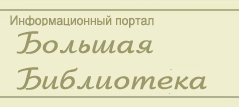Другое : Art of the Edo Period
Art of the Edo Period
Art of the Edo Period
The
Tokugawa shogunate of the Edo period gained undisputed control of the
government in 1603 with a commitment to bring peace and economic and political
stability to the country; in large measure it was successful. The shogunate
survived until 1867, when it was forced to capitulate because of its failure to
deal with pressure from Western nations to open the country to foreign trade.
One of the dominant themes in the Edo period was the repressive policies of the
shogunate and the attempts of artists to escape these strictures. The foremost
of these was the closing of the country to foreigners and the accoutrements of
their cultures, and the imposition of strict codes of behavior affecting every
aspect of life, the clothes one wore, the person one married, and the
activities one could or should not pursue.
In
the early years of the Edo period, however, the full impact of Tokugawa
policies had not yet been felt, and some of Japan's finest expressions in
architecture and painting were produced: Katsura Palace in Kyoto and the
paintings of Sotatsu, pioneer of the Rimpa school.
Architecture
Katsura,
built in imitation of Prince Genji's palace, contains a cluster of shoin
buildings that combine elements of classic Japanese architecture with
innovative restatements. The whole complex is surrounded by a beautiful garden
with paths for walking.
Painting
Sotatsu
evolved a superb decorative style by re-creating themes from classical
literature, using brilliantly colored figures and motifs from the natural world
set against gold-leaf backgrounds. One of his finest works is the pair of
screens The Waves at Matsushima in the Freer Gallery in Washington, D.C. A
century later, Korin reworked Sotatsu's style and created visually gorgeous
works uniquely his own. Perhaps his finest are the screen paintings of red and
white plum blossoms.
Woodblock Prints
The
school of art best known in the West is that of the Ukiyo-e paintings and
woodblock prints of the demimonde, the world of the kabuki theater and the
brothel district. Ukiyo-e prints began to be produced in the late 17th century,
but in 1764 Harunobu produced the first polychrome print. Print designers of
the next generation, including Torii Kiyonaga and Utamaro, created elegant and
sometimes insightful depictions of courtesans.
In
the 19th century the dominant figure was Hiroshige, a creator of romantic and
somewhat sentimental landscape prints. The odd angles and shapes through which
Hiroshige often viewed landscape, and the work of Kiyonaga and Utamaro, with
its emphasis on flat planes and strong linear outlines, had a profound impact
on such Western artists as Edgar Degas and Vincent van Gogh.
Another
school of painting contemporary with Ukiyo-e was Bunjinga, a style based on
paintings executed by Chinese scholar-painters. Just as Ukiyo-e artists chose
to depict figures from life outside the strictures of the Tokugawa shogunate,
Bunjin artists turned to Chinese culture. The exemplars of this style are Ike
Taiga, Yosa Buson, Tanomura Chikuden, and Yamamoto Baiitsu.
Список литературы
Для подготовки данной работы
были использованы материалы с сайта http://www.ibiblio.org/louvre/paint/
|


